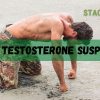Many anabolic steroid users are still unsure about where to inject and how to self-administer the injections. Steroid injections can be given intramuscularly or subcutaneously. Furthermore, many persons who use steroids are unable to explain to another person the difference between injecting into the delts versus the glutes (or buttocks). This essay will assist you in avoiding blunders when injecting anabolic steroids.
Read more about what is testosterone suspension
Types of Steroid Injections
Before anything else, let’s discuss steroid injections. There are three primary types of steroid injections: Intravenous, Intramuscular, and subcutaneous steroid injections. Let’s discuss each one of them.
Intravenous Injections
Intravenous steroid injections are anabolic steroids that are injected into the bloodstream in order for the steroid to take effect. The reason these steroids are injected into the blood is because they are too lipophilic and water insoluble to take orally.
There are two types of steroids that can be injected into the blood: esters of Testosterone and corticosteroids. In a study conducted by the University at Buffalo, they found that out of all the athletes who received steroid injections, only 22% had no adverse side effects including reduced libido, feelings of depression, mood swings and gynecomastia. The use of Intravenous Steroid is common among healthcare providers and bodybuilders.
Intramuscular Injections
In general, intramuscular injections are classified into two types: systemic and local. Injections into the buttocks are systemic because the drug’s effectiveness is maximized because the amount of steroid delivered into the general circulation approaches 100%. Injections into the anterior deltoid, for example, are less successful because only 70% of the injected medication enters the general circulation, with the remainder going to local muscle growth.
It can also be said of injections into the lateral surface of the thigh, in which case 85% of the steroid injected enters the systemic circulation. More experienced steroid users have a preferred injection site and can usually provide accurate, trustworthy advise to those who are new to injectable steroids.
Many people will suggest and/or strongly advise heating the ampoule or vial slightly before administering oil-based steroids, which can be accomplished by holding the vial in the palms of both hands for several seconds.
Read More About What is Testosterone Cypionate
Subcutaneous Injections
Subcutaneous injections have performed admirably when it comes to powerful bodybuilding medications like insulin, insulin-like growth factor (IGF-1), and growth hormone. Furthermore, insulin injection might be intramuscular, intravenous, or subcutaneous. The effect of insulin occurs rapidly in the later circumstances, but it is more difficult to manage the process, hence the subcutaneous fat layer is considered the optimal spot for insulin injection. The insulin-like growth factor can be injected subcutaneously or intramuscularly; however, scientific evidence suggests that intramuscular injection of IGF-1 is a more successful strategy.
Read more about how do anabolic steroids work
The well-known chorionic gonadotropin can be administered both subcutaneously and intramuscularly.
Injecting anabolic steroids in the same area may result in the loss of the subcutaneous fat layer of cells in the area where the injection was made. It is critical to rotate injection sites and NEVER inject in the same location back to back. Users who disregard this critical piece of information are inviting pain and the chance of infection(s).
Different Syringes, Pins, and Supplies for Steroid Injections
Individuals unfamiliar with these types of medical supplies and equipment must first understand the following terminology:
mL or CC: mL is a milliliter abbreviation, whereas CC is a cubic centimeter abbreviation. Both phrases signify the same thing, refer to the same object, and are identical. 1mL = 1CC.
Gauge: Gauge refers to the thickness of the pin, which may alternatively be characterized as the circumference of the tube at the pin’s center. This means that the narrower the pin is, the higher the gauge number (and therefore the smaller the circumference of the tube). A 19g pin, for example, is much thicker than a 25g pin, which is lot thinner. The term gauge does not refer to the pin’s length.
Length: The length of the pin relates to its length, and the two typical pin sizes used are 1″ and 1.5″ (sometimes known as 1 and 12″). There are numerous additional sizes available, such as 12″ pins (0.5″), 5/8″ pins (0.625″), and so on.
The following is a list of the most common steroid injectable supplies:
3mL/3CC Syringe
Although they exist in a variety of sizes and brands, 3mL syringes all look the same and are the industry standard for intramuscular injections. 3mL syringes are available pre-packaged with the needle attached, or as the syringe (barrel) only.
5mL/5CC Syringe
5mL syringes are exactly what they sound like, and they can hold up to 5mL of liquid. As with 3ml syringes, these can be purchased pre-packaged with or without the needle.
Hypodermic Needle
As shown above, hypodermic needles come in a variety of gauges and lengths. A specified range of gauges will be provided for both the actual injection and the withdrawal of solution from the vial prior to the injection for the purpose of the injection procedure.
Read more about Workout Description
Alcohol Swabs/Pads
Alcohol swabs are required for obvious reasons of sterility.
Insulin Syringe
Insulin syringes are of the conventional kind, but the needle length can vary (shorter needle insulin syringes are known as “shorts”), and insulin syringes are generally one whole unit without the option to unscrew the needle tip. They are intended for subcutaneous administration only and should not be used for intramuscular injections. Insulin syringes are always 1mL in volume and rarely larger.
Finally, the use of Band-Aids and/or dry cotton balls with plastic bandages is advised to halt any potential bleeding after an injection.
Injection Complications
It is also worth mentioning the sores that may develop during the injection process. Tumors, abscesses, and hematomas are uncommon, although they might occur as a result of careless or imprudent steroid injections. Of course, anytime anyone injects a syringe into the skin, they will experience pain or a minor pinch. This is common. Those with years of expertise can tell the difference between “normal” discomfort and the sense that something isn’t quite right. A tiny bump or lump may form after an injection. This is not cause for celebration or concern.
Discover and comprehend the signs and symptoms of an infection. Redness, tenderness, a warm/hot sensation, and pain that lasts for several days are all symptoms of an impending injection. This can happen if you use non-sterile syringes, reuse a syringe, or don’t clean the injection site with an alcohol swab before you inject. When a false or counterfeit product is utilized, infections, tumors, abscesses, and hematomas might result. An anabolic steroid manufactured by the artisanal approach may contain a variety of ingredients. As a result, the body goes into defense mode and begins to reject the injected medicine. Many people prefer oral anabolic steroids to avoid the agony associated with steroid injections. However, the possibility of a counterfeit or phony goods remains.
Electrophoresis, compresses, and iodine nets are used to treat tumors that may develop following an injection. A burst tumor causes an abscess; in the initial occurrence, electrophoresis is required; in most cases, surgical intervention and antibiotics are required. Many anabolic steroid websites also provide antibiotics, which are an excellent accompaniment to any steroid buy. Rather than going through the effort of calling your family doctor for a prescription, purchase a supply of antibiotics from a reputable steroid supplier. Better to be safe than sorry.
Read more about weight loss diet
Hematomas caused by injections, as opposed to abscesses, are easier to treat. A hematoma is caused by a broken blood vessel and usually disappears on its own. Repeated injections may cause the surrounding capillary in the hematoma location to become inflamed, but this is not a difficult condition to cure. The next day, users can simply apply a cold compress followed by a warm compress. Furthermore, an antimicrobial ointment or gel can be administered to aid in the healing process.
Individuals who have read the preceding information can appropriately self-inject anabolic steroids with little or no pain and/or difficulties. Those who do not utilize injectable steroids do not usually take the effort to understand the right protocol. He or she may be missing out on incredible gains that may have been made.
What are the Side Effects of Steroid Shots?
Despite being one of the most effective ways to administer anabolic steroids to the body, there are still some side effects associated with injecting steroids. One of the most common side effects of this practice is the occurrence of a “lump” in the arm due to accumulation of fluid in the tissue. This lump can be quite painful when touched. There are some other side effects that may occur with steroid injection, such as: A skin infection at the injection site called cellulitis caused by bacteria entering through tiny incisions in the skin’s surface and multiplying rapidly. This serious complication is more common when injections are made subcutaneously or intramuscularly.
Another side effect of injecting steroids is a need for higher doses in order to achieve the same effects. This phenomenon is referred to as tachyphylaxis, which means that tolerance builds quickly and the body responds by requiring more and more of the drugs in order to achieve the desired effects.
Does Injecting Steroids Hurt?
Pain around the injection site, ranging from minor to severe, is a common adverse effect of steroid injections. This is known as a cortisone or steroid flare. bruise in the vicinity of the injection site For a few hours, my face flushed.
Read more about Testosterone Acetate
What’s the most painful steroid to inject?
This is a difficult question to answer because it depends on the person and their tolerance for pain. However, according to reviews from people who inject steroids, the steroid that seems to be the most painful to inject is testosterone. There are several steroid types, but testosterone has the most potential for being painful. Some common injection sites for this type of steroid is the buttocks and hips, which are likely to cause pain due to their thickness and hardness.







